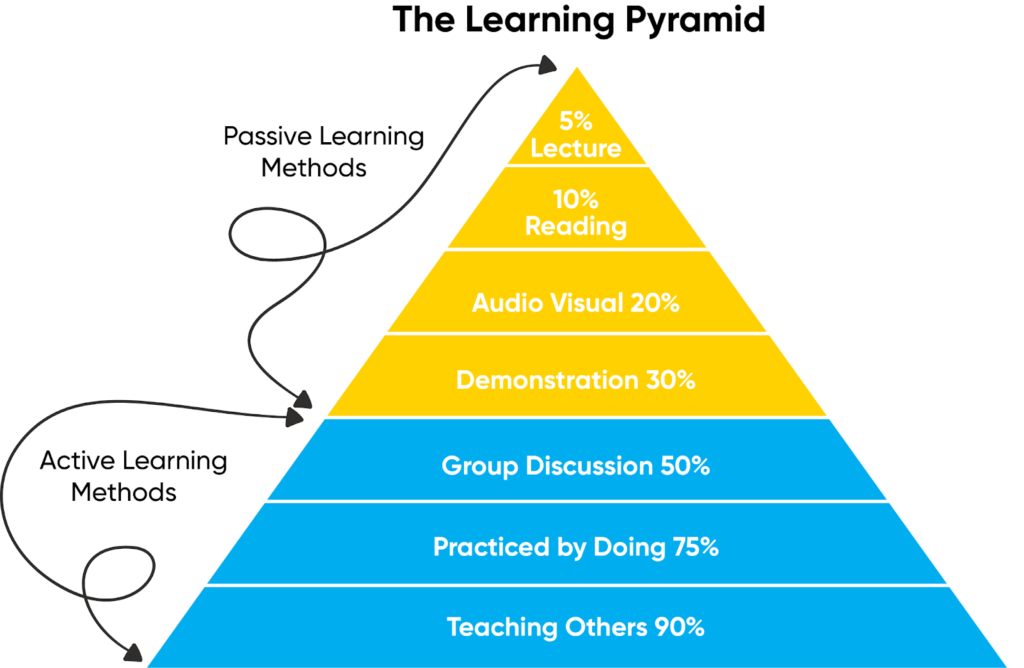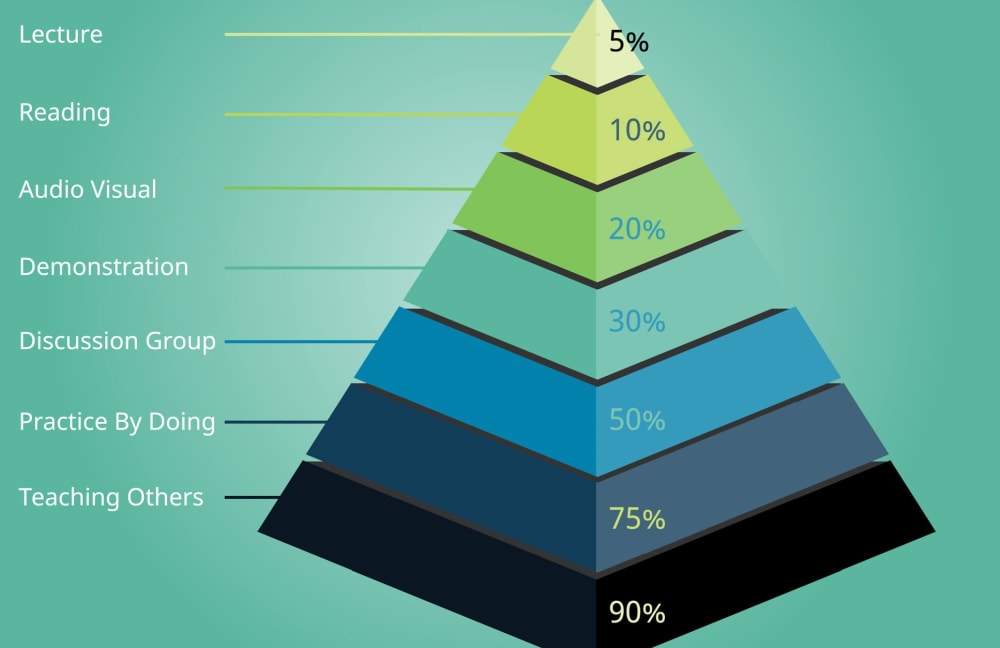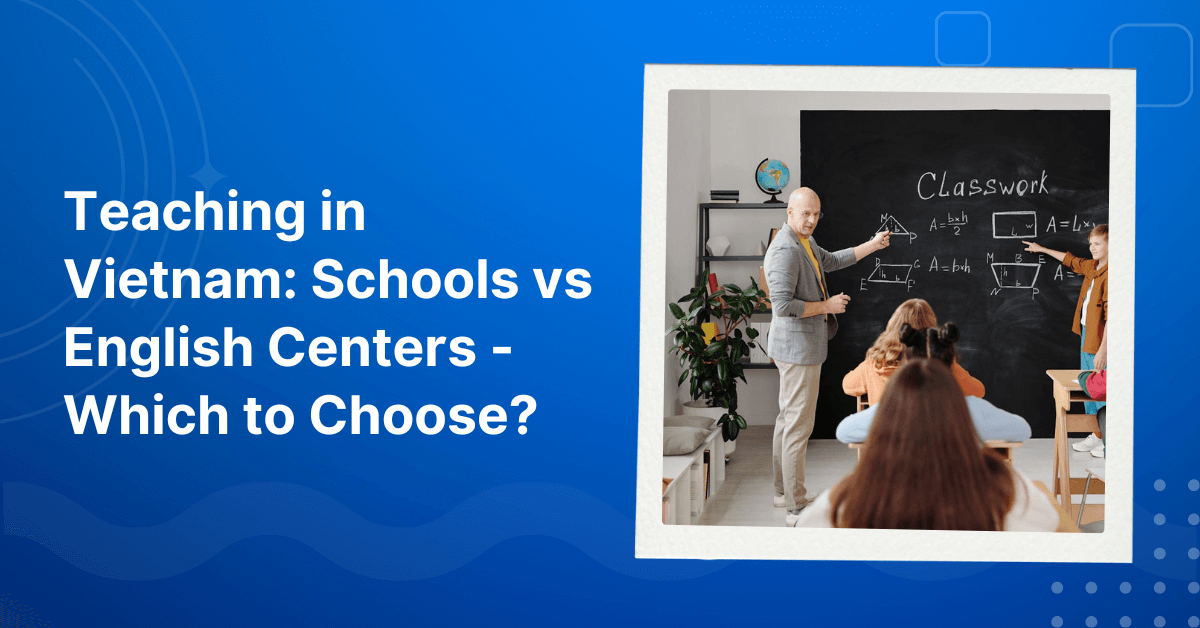The learning pyramid model is a fundamental concept in the realm of education and cognitive psychology, serving as a guiding framework for understanding how individuals acquire knowledge and skills. This intriguing model offers insights into the various methods and strategies that facilitate effective learning, highlighting the relative effectiveness of each approach. In this article, VTJ will explore the elements that constitute the learning pyramid model and explore its significance in enhancing educational practices. By understanding this model, educators and learners can harness its principles to optimize the learning process and foster a deeper understanding of the subjects at hand.
What Is The Learning Pyramid Model?

The learning pyramid, also known as the “Cone of Learning,” is an educational model designed to explain the varying effectiveness of different teaching methods in aiding students’ retention of information. This model quantifies the impact of each approach by assigning them specific percentages out of 100. It posits that methods involving active engagement tend to be significantly more effective than passive ones, such as reading or simply listening to information.
Visually, the learning pyramid employs a triangular diagram to represent this concept. Typically, the diagram arranges each learning method in sequential order, with the least effective techniques at the top point of the triangle, marked with lower percentages, and the more dynamic approaches at the lower levels. Some versions of this model employ distinct colors or arrows to further distinguish between active and passive methods, offering a more nuanced analysis.
Explore More Teaching Tips: Didactic Teaching: Differences between Didactics and Pedagogy?
How Important Is The Learning Pyramid Model?

The learning pyramid is of paramount importance in the field of education due to its practical implications and potential to revolutionize teaching and learning practices. Recognizing its significance can lead to several benefits for both educators and students.
For Educators
Understanding the learning pyramid helps educators tailor their teaching methods to maximize student engagement and retention. They can integrate a variety of techniques, moving away from traditional lectures to more interactive and hands-on approaches. Additionally, educators can better assess the effectiveness of their teaching by considering the pyramid’s principles. By tracking students’ comprehension and retention rates, they can make data-driven adjustments to their instructional strategies.
Discover Related Guides: How to Use The Station Rotation Model (+Definition & Benefits)
For Students
Students who apply the learning pyramid can actively select and advocate for the most effective learning methods. By gravitating toward interactive and hands-on learning methods, students can better understand the subjects they study. This not only improves retention but also encourages critical thinking and problem-solving skills.
Explore More: Learning Gaps: Types & How Teachers Can Identify and Solve Them
Elements Of The Learning Pyramid
The Learning Pyramid, a foundational concept in education, consists of seven distinct elements, each playing a crucial role in the acquisition of knowledge and skills. These elements include:
Lecture – Element Of The Learning Pyramid
Lectures are a traditional method of instruction where an expert or educator delivers information orally to a group of learners. Lectures provide students with the opportunity to receive information directly from an experienced source, often someone with deep knowledge and expertise in the subject matter. This can be beneficial for introducing complex topics, summarizing key concepts, or providing context for further study. Additionally, lectures can be an efficient way to disseminate information to a large audience, making them a practical choice in settings like university lectures or corporate training sessions.
However, lectures are often criticized for their passive nature. Students may have limited opportunities for active engagement and participation, which can lead to reduced retention of information. Furthermore, attention spans can vary widely, and some students may struggle to maintain focus during extended lectures. To enhance the effectiveness of lectures, educators may incorporate interactive elements like discussions and questions to keep learners engaged and encourage active learning.
Related Guides: What Is PBIS (Positive Behavioral Interventions and Supports)?
Reading – Element Of The Learning Pyramid
Reading is a fundamental method of learning where individuals acquire knowledge from written texts. Reading allows learners to progress at their own pace, making it suitable for a wide range of learning styles and abilities. It offers the flexibility to revisit material as needed, enabling deeper comprehension and mastery of complex subjects.
Nevertheless, reading’s effectiveness as a learning method can vary among individuals. The model posits that students typically retain just 10% of the information they encounter in academic texts. Consequently, while reading can be an effective means of learning for some students, it may prove less efficient for others.
Explore More Teaching Tips: 4 Reading Levels | How They Are Evaluated?
Audio-Visual – Element Of The Learning Pyramid
Audio-Visual learning integrates both auditory and visual elements into the learning process. This method harnesses the power of multimedia to enhance understanding and retention of information. In an audio-visual learning environment, learners are exposed to a diverse range of stimuli. Visual elements include images, charts, diagrams, videos, animations, and slides, which serve to illustrate complex concepts and provide visual context. Auditory components complement these visuals with spoken explanations, background music, sound effects, and narration. This combination of sensory input can create a highly engaging and immersive learning experience.
Visual learners benefit from the visual aids, while auditory learners gain insights through the spoken content. Furthermore, the synergy between visual and auditory elements can reinforce learning by providing multiple pathways for information to be absorbed and retained. However, the learning pyramid indicates that Audio-visual learning methods typically result in a retention rate of around 20% for the information learned because this is also a passive approach.
Discover Related Guides: Project-based learning (PBL): Benefits, Examples & Ideas
Demonstration – Element Of The Learning Pyramid
Demonstration refers to the presentation of information, concepts, or skills by an instructor or expert to learners. This instructional method often takes the form of lectures, presentations, tutorials, or practical demonstrations, depending on the subject matter and the learning environment. According to the learning pyramid model, these demonstrations have the potential to facilitate the retention of up to 30% of the information observed. During a demonstration, learners observe and absorb new knowledge or skills through visual and auditory cues, making it an essential step in the learning process. Effective demonstrations not only convey information but also engage learners, providing them with a clear foundation upon which they can build further understanding.
Discussion – Element Of The Learning Pyramid
Discussion is another crucial element of the learning pyramid, representing the interactive and participatory aspect of learning. This phase involves active engagement and exchange of ideas among learners, allowing them to clarify doubts, deepen their understanding, and gain different perspectives on the topic at hand. Discussions can occur in various settings, such as classroom debates, group discussions, online forums, or peer-to-peer conversations. They encourage critical thinking, problem-solving, and the development of communication skills. In a well-facilitated discussion, learners are encouraged to express their thoughts, ask questions, and challenge each other’s viewpoints, fostering a collaborative learning environment. Effective discussions promote higher-order thinking and help learners consolidate the knowledge acquired during the demonstration phase, making it an indispensable component of the learning process. Employing discussion methods within the classroom environment can enhance the retention of approximately 50% of the information received.
Practice (By) Doing – Element Of The Learning Pyramid
The “Practice (By) Doing” element represents a pivotal stage within the learning pyramid, which serves as a guide for effective learning methodologies. This phase involves active hands-on experience and practical application of knowledge or skills gained from earlier stages of the learning process. It emphasizes that true mastery and comprehension often come from actively engaging with the subject matter. In this phase, learners are encouraged to apply their knowledge through exercises, projects, experiments, simulations, or real-world scenarios. These practical exercises are deemed highly effective teaching methods, as they suggest that students can retain as much as 75% of the information presented to them. Through practice, individuals reinforce their understanding, develop problem-solving abilities, and build muscle memory. “Practice (By) Doing” helps learners bridge the gap between theory and application, ultimately increasing the likelihood of retaining and applying knowledge successfully in various contexts.
Explore More Teaching Tips: What Is Ability Grouping In Education: Advantages and Disadvantages
Teach Others – Element Of The Learning Pyramid
The “Teach Others” component is a vital element in the learning pyramid model, representing an advanced stage of the learning process. This phase acknowledges the powerful concept that teaching a topic to someone else enhances one’s own understanding and retention of the material. Learners, having already acquired knowledge through previous stages, are encouraged to share their expertise with peers, colleagues, or even through instructional methods like presentations or mentoring. Teaching others not only reinforces the learner’s grasp of the subject matter but also fosters communication and leadership skills. It reflects the idea that explaining complex concepts to others requires a deeper level of comprehension and the ability to convey information effectively. According to the Learning Pyramid model, students have the potential to retain approximately 90% of what they can proficiently teach to others.
Discover Related Guides: What is Standardized Testing? Definition, Types, Pros & Cons
Learning Pyramid Goals For Teachers
Focus On Memorization

Within the learning pyramid, the “Focus on Memorization” component underscores the pivotal role of memory retention in the learning process. Teachers are encouraged to employ strategies and activities that bolster students’ capacity to remember and recall information effectively. The goal here is to equip students with the cognitive tools necessary for long-term retention and application of knowledge.
To achieve this goal, teachers can employ various techniques such as introducing mnemonic devices, promoting repetition of key concepts, and utilizing memory aids to help learners store and retrieve facts, concepts, and details more efficiently.
- Repetition: Encourage students to review and repeat information multiple times to reinforce their understanding and retention.
- Flashcards: Utilize flashcards as a tool for memorizing key facts, vocabulary, or formulas.
- Mnemonic devices: Teach students mnemonic techniques like acronyms, rhymes, or visual imagery to aid in memorization.
- Chunking: Break down complex information into smaller, manageable chunks to facilitate memorization.
Related Guides: 6 Types of Assessment in Education & How to Use Them
Combine Several Elements

One of the crucial aspects of the learning pyramid is emphasizing the power of integrating multiple instructional approaches to enhance the learning experience. Teachers are encouraged to blend various elements of the pyramid model, such as demonstration, practice, discussion, and teaching others, to create a comprehensive learning environment. By combining these elements strategically, educators can cater to diverse learning styles and promote a deeper, more holistic understanding of the subject matter. The goal is to create a dynamic and engaging learning experience. To enhance learning and retention, that can include:
- Multimedia: Utilize a combination of visual aids, audio recordings, videos, and interactive online resources to engage students and cater to different learning styles.
- Real-world examples: Connect abstract concepts to real-life scenarios, making the content more relatable and memorable for students.
- Hands-on activities: Incorporate practical activities, experiments, or simulations that allow students to actively engage with the subject matter.
- Collaborative learning: Encourage group work, discussions, and peer-to-peer teaching to foster a deeper understanding of the material.
Explore More Teaching Tips: What is Effective Teaching? 13 Effective Teaching Practices
Encourage Classroom Participation

“Encourage Classroom Participation” is a fundamental goal within the Learning Pyramid, focusing on fostering active involvement of students in the learning process. This approach not only enhances comprehension but also nurtures essential skills such as critical thinking, communication, and teamwork. Active participation in the classroom promotes deeper learning and retention. To encourage classroom participation, teachers can:
- Ask open-ended questions: Pose thought-provoking questions that require students to think critically and express their opinions.
- Provide wait time: Allow students sufficient time to process and formulate their responses before expecting an answer.
- Use cooperative learning strategies: Implement group activities, debates, or presentations that require active involvement from all students.
- Create a safe and inclusive environment: Foster a classroom culture where students feel comfortable sharing their thoughts and ideas without fear of judgment.
Explore More: What Is An Assessment Tool? 11 BEST Assessment Tools for Teachers
Tips For Using The Learning Pyramid
The learning pyramid provides valuable insights into effective teaching strategies that can enhance student learning and retention. Here are some tips for utilizing the learning pyramid in your teaching practices:
- Focus on active learning: Encourage students to actively participate in the learning process. Instead of passively receiving information, provide opportunities for students to apply their knowledge, solve problems, and engage in discussions. This can be achieved through activities such as case studies, simulations, experiments, and projects.
- Emphasize understanding over memorization: While memorization has its place, prioritize deep understanding of concepts. Help students make connections between different ideas, apply knowledge to real-world situations, and engage in critical thinking. This can be done through discussions, problem-solving tasks, and open-ended questions that require students to analyze and evaluate information.
- Provide regular opportunities for review: Incorporate regular review sessions to reinforce learning and enhance retention. This can involve quizzes, practice exercises, or concept mapping activities. By revisiting previously learned material, students can solidify their understanding and reinforce long-term memory.
- Personalize learning experiences: Recognize that each student has unique learning needs and preferences. Tailor your teaching methods to accommodate individual differences. Offer opportunities for students to explore topics of interest, provide choices in assignments or projects, and offer support for students who may require additional assistance.
- Use Technology Wisely: Leverage educational technology and digital resources to enhance learning. Online platforms, interactive simulations, and multimedia tools can complement traditional teaching methods.
- Assess Progress: Continuously evaluate student progress and adjust your teaching methods accordingly. Formative assessments, quizzes, and feedback sessions can help identify areas where students may need additional support.
The learning pyramid model serves as a valuable framework for educators to optimize their teaching strategies and promote effective learning. By recognizing the varying levels of engagement and retention associated with different instructional methods, teachers can make informed decisions about their approach. Ultimately, the learning pyramid model offers a roadmap for educators to enhance their teaching practices and facilitate meaningful learning experiences for their students.






